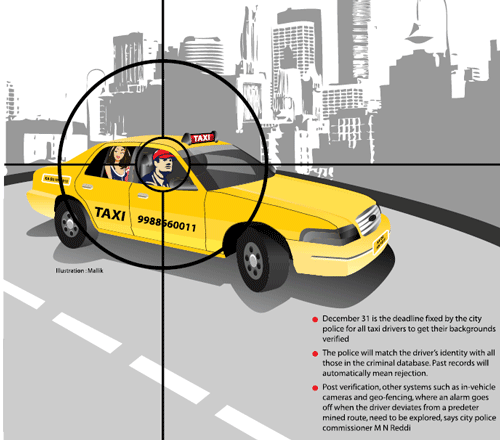In a big step to dissuade use of private vehicles on the city’s choked roads, the Delhi government on Monday announced the launch of affordable “City Taxis”, with a panic button for women's safety, and a Goa-style rent-a-motorcycle scheme.
The move, aimed at promoting public transport, last-mile connectivity, commuters' comfort and affordable alternatives to buying and using private vehicles — a major cause of congestion and over 1,600 annual fatalities — also carries a green imprint. “The new white taxis are likely to hit the roads by next month,” Transport Minister Gopal Rai told reporters, adding that “City Taxi” — which will have an engine capacity of 600-749 cc — will charge Rs 25 for the first 2 km and Rs 10 for each subsequent km. All these will be CNG cabs.
Effectively, the new scheme will encourage the use of Nano and electric car Reva as cabs, and their fare would be just Rs 2 a km higher than the three-wheeler autorickshaws, whose drivers are often accused of fleecing commuters. “The taxis will come with a panic and hooter button as a safety feature,” said Rai, adding that the aim is to also offer safe public transport to women and efficient transport from Metro stations and bus stands.
Pressing the panic button would flash an SOS message to the police, who would then track the vehicle using GPS, and the hooter button would activate an alarm in the vehicle to alert others on the road, he said. The new taxi scheme will amalgamate the earlier schemes of radio and economy taxis. The black-and-yellow taxis and all-India tourist permit taxis shall continue as earlier. Individuals, aggregators and groups of taxi-owners — with up to 2,500 cabs — will be eligible to register for the service.
According to a Central Road Research Institute study, Delhi has 106 cars for every 1,000 people. This is nearly seven times the national average of 16 cars for every 1,000 people.
Experts welcomed the initiatives, but suggested that an independent body regulate the new taxis to prevent them from adding to on-road chaos.
Noting the low success of earlier attempts by city planners to popularise public transport, Institute of Urban Transport's Kanika Kalra said: “In the absence of easy accessibility, commuters find it difficult to use the world-class Metro system and instead prefer their own vehicles.”
The new taxis would hopefully prove effective in offering comfortable public transport and be better disciplined and managed than autorickshaws, she said. Rai said for rented motorcycles, licences would be issued to operators, who would offer the vehicles to individuals and tourists. The bikes would be commercially registered and given contract carriage permit. Licencees should have to have a fleet of a minimum of five motorcycles with an office space of 150 square feet, he said.
A 2008 study by RITES (Rail India Technical and Economic Service) suggested that by 2021, public transport (bus, metro, rail) might carry 64.6 per cent of all Delhi's commuters.
